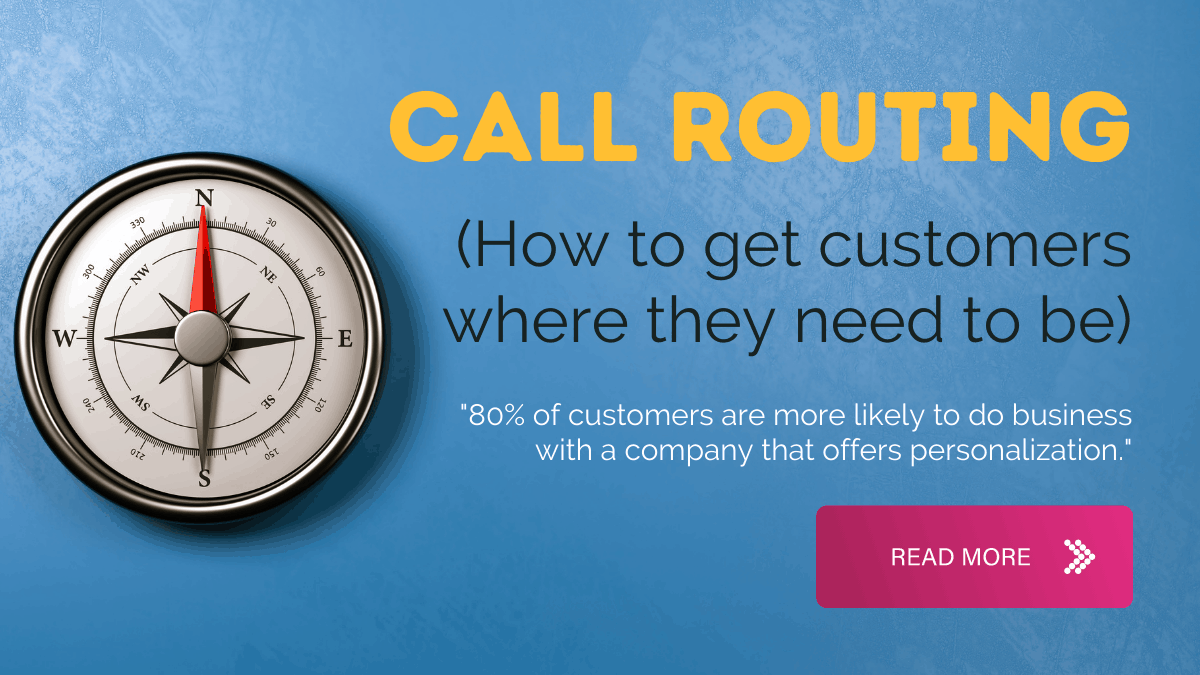In this post:
- Refresher! What is call routing?
- The BIG call routing benefits are…
- How to personalize with dynamic routing
- Is dynamic call routing good for customers?
- Conversational AI is the future of routing
- Don’t forget omnichannel contact routing!
Your contact center uses some kind of call routing, right?
Probably an IVR that does some broad-strokes data collection and sends callers to either service or sales?
Or maybe you’re a bit more granular. Maybe, you can send customers to service or sales or retention!
Either way, you have a system that is just ok.
It’s not super efficient. It’s not the CX gold standard. It’s definitely not going to wow your customers.
It’s just… fine.
But, assuming you’re the go-getter I think you are, you’ve probably considered better and more data-driven methods.
These methods exist, they’re not hard to set up, and they yield some pretty staggering results.
Let’s look at how it works.
Refresher! What is call routing?
Call routing means sending an incoming caller to an agent or automated resource that can help them.
Ideally, you’ll route customers based on what they need from you.
Routing is handled by an Automatic Call Distributor (ACD) which (in the best examples) uses stored customer data, customer intent and agent availability to make decisions.
Popular call routing strategies include:
- Time-based routing directs callers based on when they call. That helps you to provide 24/7 service by routing callers to an outsourced center or automated service.
- Skills-based routing directs callers to agents with the skillset to help them. This could be tech skills, product knowledge or language.
- Location-based routing sends callers to their most local or most convenient office. It’s useful if you provide localized service or if you offer support in multiple languages.
- Round-robin routing gives each agent an even share of incoming calls. It’s a good way to ensure agents have a consistent workload.
The BIG call routing benefits are:
- Cutting your call transfer rate
- Boosting your first contact resolution
- Reducing average handling time
- Personalizing services for customers
All that needs *data* to work.
Your ACD can’t make informed routing decisions without data.
What kind of data are we talking about?
It could be something as simple as a local phone number. That tells you where the customer is calling from, so you can route them to a local center.
But you can go far beyond this…
Connect up the right systems and you can match each customer to their CRM profile, or tickets in your Helpdesk.
And what do you do with that information?
You could:
- Offer priority routing to high-value or churn risk customers
- Route customers directly to the agent managing their case
- Provide automated updates about their order or ticket status
Those are just three use cases, but let’s face it; they’re pretty compelling ones for businesses that value happy customers.
How to personalize experiences with dynamic routing
When you’re creating call routing logic, the phrase “it depends” comes up a lot.
Where do we want customers with open Helpdesk tickets to go?
“It depends – what info can we give them in the IVR?”
Where do we want to send our highest value customers?
“It depends – what’s call volume like?”
And so on. And this is where dynamic routing comes into play.

Dynamic routing makes it easy
Instead of setting up general, all-purpose rules, you create flexible rules that factor in all the variables.
These are generally if/then scenarios.
If the customer has an open Helpdesk ticket then look up the managing agent.
If the agent is logged in then check their availability.
If the agent is available then route to agent.
There’s no limit to how granular you can get with that kind of logic.
Maybe the agent is in after call wrap; maybe they’re on a call; maybe the ticket has already been resolved.
Is dynamic call routing good for customers?
Sure is.
In basically any situation, a customized experience beats a generic one.
Plus, Epsilon found that 80% of customers are more likely to do business with a company that offers personalization.
The good news is that you already have the data you need.
You just need to take the next step – a little API integration between data sources like your CRM, and your ACD.
Conversational AI is the future of routing
Effective routing relies largely on data you already have.
But it’s also useful to collect new data – which is where conversational AI can help.
In practice, conversational AI is often an add-on to your existing IVR.
Instead of old school DTMF (button mashing), a conversational system works like an Alexa, or any other voice assistant.
It’s useful because:
- They solve most of the issues with existing IVRs (i.e. callers hate them)
- They can actually provide detailed information and prevent the need to route to an agent
- They can gather very rich and detailed information to pass on to agents
These systems use Natural Language Understanding (NLU) to figure out what customers need (“intent recognitions”).
Then, they can route callers to the right agent or department.
The insurance industry often makes use of this tech. Common calls, like First Notification of Loss, include a lot of steps that a conversational system can handle.
That saves those businesses a lot of time and money, and guarantees calls are routed properly.
Don’t forget omnichannel contact routing!
We’ve talked a lot about routing callers.
Obviously, the same rules apply to every other contact channel that you deal with.
In fact, you can’t run truly omnichannel support unless you’ve integrated your channels. In that scenario, your customers can move freely between channels without starting from scratch each time.
There are two main routing challenges related to omnichannel support:
- Your routing system needs to know when agents are busy with customers on non-voice tickets.
- It needs to know when customers have previously spoken with a particular agent and put them through to the correct person.
Omnichannel contact routing solves both these problems.
It does this by creating a single queue for all incoming contact – no matter which channel it arrives by. Customers always reach the most relevant help.
The best call routing solution is easily configurable
Flexibility is the name of the game.
You can set up a call routing methodology that is perfect for your business… at the moment.
But if you can’t change and adapt that methodology it‘ll go out of date faster than yesterday’s avocados.
So – do you employ a crack team of developers to continually update your system?
Or… do you use a No-Code platform that enables you to change anything about your call routing any time you want?
I think you know the right answer already…





